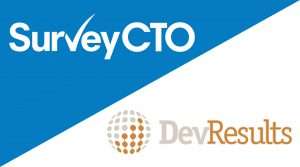Why you need a tech stack
Picture an organization working on a clean water initiative in rural communities. They’ve spent months collecting data from the field and are using spreadsheets to manage the process. Field teams are logging information in separate spreadsheets, but this leads to inconsistent formats and version control headaches. They also struggle to keep data up to date as information trickles in from remote areas with limited internet access. Analyzing trends—like linking water quality improvements to reduced illness rates—becomes a manual, time-consuming process. Without an integrated data analysis and visualization system, their ability to make informed, real-time decisions is severely limited.
Many organizations like the ones in the example above turn to basic tools like spreadsheets for data collection. However, this approach often results in time-consuming workflows, data quality issues, and missed opportunities for deeper insights. This leads organizations to seek out digital data tools. And often, while transitioning from paper-based to digital, organizations look for an all-in-one platform that will cover all their data work, from collection to reporting.
What many organizations fail to realize at this point is that they’re actually selling themselves short.
An all-in-one platform that combines numerous data-related capabilities may sound appealing, but it won’t be specialized in any of those capabilities. Data work requires a wide range of actions, from collection to data monitoring to statistical analysis, to visualization and reporting, to interpretation of insights. The truth is, no one tool is designed to be best-in-class for such a diverse set of functions.
Maybe one tool offers data visualization, but really was built to optimize fully offline data collection with its rich suite of data quality and security tools. Or another tool checks a box for data collection, but was primarily designed for data analysis. If you dig under the surface of tools that offer to “do it all,” you will find that while they claim to meet many needs, they probably specialize in or excel at a smaller number of things—meaning your overall data workflows will at some point be subpar if it’s the only tool in your data work belt.
Fortunately, there is a way to excel across the entire data lifecycle.
Instead of relying on one tool for everything in your data collection and analysis process, it’s more effective to create a full tech stack that includes customized tools for data visualization, reporting, and analysis. By integrating digital data collection tools like SurveyCTO with platforms built specifically for in-depth data analysis, visualization, reporting, and advanced statistical work, you’ll significantly improve data quality and uncover richer insights.
In this article, we’ll guide you in selecting the right tools for different needs, highlight the benefits of an integrated tech stack, and introduce key ways to enhance your data management.
5 steps to building your tech stack

Selecting the right tools for building an interoperable tech stack requires careful evaluation of your organization’s needs, technical capabilities, and overall goals.
Here are five tips to help guide your decision-making process in choosing the best tools to build your tech stack:
- Assess your team’s technical capacity
Before diving into specific tools, take stock of your team’s technical abilities.
If your team lacks specialized technical skills in certain areas, prioritize finding tools to fill those gaps. And make sure the tools you choose are user-friendly and can be used by anyone with the right training! Look for platforms with strong customer support or learning resources that can help bridge your team’s skill gaps.
On the other hand, if your team has developers or tech-savvy staff, you can consider more customizable solutions, and even tools that offer API integrations, which will allow for deeper functionality.
- Align tools with your organization’s goals
Each tool in your tech stack should serve a specific purpose aligned with your organization’s objectives.
For instance, if your primary goal is to monitor and evaluate project outcomes in real-time, look for platforms with strong analytics and reporting capabilities like Toladata and DevResults. These tools are built specifically for monitoring and evaluation (M&E) and offer robust data analysis features tailored to development organizations.
Also consider what your organization is trying to achieve—whether it’s better data accuracy, faster reporting, or more impactful visualizations—and choose tools that best support those goals.
If you’re focused on improving the quality of data collected in the field, SurveyCTO’s integration with platforms like PowerBI can offer visual insights that help highlight trends and inform better decision-making.
The key is to ensure that each tool can be integrated with the others in your tech stack, enabling seamless data exchange and preventing data silos.
- Select tools that can integrate with platforms you already use
Integrating SurveyCTO with CRMs like Salesforce or other internal databases can significantly enhance your ability to track, store, and analyze large amounts of data. These integrations allow field data to seamlessly flow into the systems you already use, without the need for manual intervention.
- Consider long-term scalability and flexibility
Your tech stack should not only meet your immediate needs but also be able to scale with your projects. Choose platforms that offer flexibility for future expansion.
SurveyCTO’s open API, for instance, allows you to connect with a range of other platforms or build custom solutions as your organization grows, needs change, and your tech stack increases. Tools that support scalability are especially important if your team works on multiple projects with different data collection and reporting requirements.
- Budget considerations
Using the wrong tool can actually cost more in the long run. Sometimes, free or open-source tools will require greater investment in your team in order to function and be maintained at the same level as a subscription-based SaaS tool. Inefficiencies, slow processes, and missed insights can impact the success of your projects. Think of your tech stack as an investment that will ultimately save time, improve data accuracy, and drive better outcomes–and choose your tools with long-term organizational success in mind.
The best tools for an interoperable tech stack
If you’ve decided to expand your data collection tools into a real tech stack, it’s essential to consider a variety of tools that can enhance your data reporting, analysis, and visualization capabilities.
Here are some powerful tools that can significantly complement your data collection workflow:
1. DevResults
- Function: M&E software for international development
- Key Features:
- Full integration with SurveyCTO
- Indicator tracking and performance management
- Geospatial data visualization
2. Google Maps
- Function: Geographic mapping tool
- Key Features:
- Visualize data on maps using .kml file exports
- Customize geographic subsets
- Access data offline for enhanced portability
3. Google Sheets
- Function: Cloud-based spreadsheet program
- Key Features:
- Cloud-based, interoperable format with real-time collaboration
- Automated data import from SurveyCTO
- Familiar spreadsheet interface with advanced functions
5. OpenFN
- Function: Integration platform
- Key Features:
- Connects SurveyCTO to various software systems like mobile money platforms and MYSQL
- Seamless data transfers for multi-system workflows
- Asana and other project management integrations
6. PowerBI
- Function: Business analytics and data visualization tool
- Key Features:
- Interactive dashboards and reports
- Real-time data updates
- Integration with various data sources, including SurveyCTO
7. R (with SurveyCTO R package)
- Function: Open-source programming language for statistical computing and graphics
- Key Features:
- Extensive library of statistical and graphical techniques
- Highly extensible with community-contributed packages
- SurveyCTO R package for seamless data import and manipulation
8. RESTful API
- Function: Custom integrations with external systems
- Key Features:
- Flexible data integration using API
- Supports real-time data syncing
- High customization for unique data processing needs
9. SPSS
- Function: Statistical software for social sciences
- Key Features:
- Export data into .sav files with labeled variables
- SurveyCTO alerts for truncated data with full export in .csv format
- Simplified data analysis for non-technical users
10. Stata
- Function: Advanced data analysis and statistical software
- Key Features:
- Comprehensive statistical capabilities that integrate with SurveyCTO
- Generate Stata.do file templates that will import, re-shape, and label your data
- Use templates to convert dates and times into Stata’s internal format and provide a system for safe merging and correcting of incoming data.
11. Tableau
- Function: Data visualization and business intelligence software
- Key Features:
- Drag-and-drop interface for creating visualizations
- Ability to handle large datasets
- Robust sharing and collaboration features
12. Toladata
- Function: Monitoring & Evaluation (M&E) platform
- Key Features:
- SurveyCTO-specific integration
- Comprehensive project management tools
- Impact tracking and reporting
13. Webhooks
- Function: Real-time data retrieval
- Key Features:
- Data available in .csv or JSON formats
- Instant data updates when submissions are made
- Easily integrate with downstream systems for faster data processing
14. Zapier
- Function: Web-based automation tool
- Key Features:
- Connect SurveyCTO with hundreds of other apps
- Create automated workflows without coding
- Trigger actions based on new data submissions
Building custom solutions with APIs
APIs (Application Programming Interfaces) allows different software systems to communicate and exchange data seamlessly. Using APIs enables automated data transfers, real-time updates, synchronization with external databases, and integration with custom applications, ensuring that your data is always up-to-date and accessible across your tech stack.
SurveyCTO’s API is specifically designed to support seamless data exchange and to automate the transfer of data between SurveyCTO and various other platforms. For organizations with a team that has technical skills, APIs can be the perfect solution to fill gaps in your tech stack.
Examples of successful integrations:
- Real-time database synchronization: By leveraging APIs, organizations can sync SurveyCTO data with external databases, ensuring data consistency and accuracy across all platforms.
- Custom applications: Development teams can build custom applications and systems that automate data flow between SurveyCTO and other platforms. This allows for bespoke solutions that fit specific workflows that only the flexibility of APIs can support.
- Automated data transfers: APIs enable automatic data imports and exports, streamlining processes and reducing manual effort while ensuring data is always up to date.
Expand and integrate your tech stack for better data quality
A well-integrated tech stack can transform your data collection efforts from manual, time-consuming and error prone, into a streamlined, high-impact process. By carefully selecting the right tools, leveraging seamless integrations, and continually refining your approach, you can unlock the full potential of your data.
Explore the integrations that SurveyCTO offers and take the first step toward a more efficient and powerful data collection ecosystem. With the right tech stack, better data—and better decisions—are within reach.




